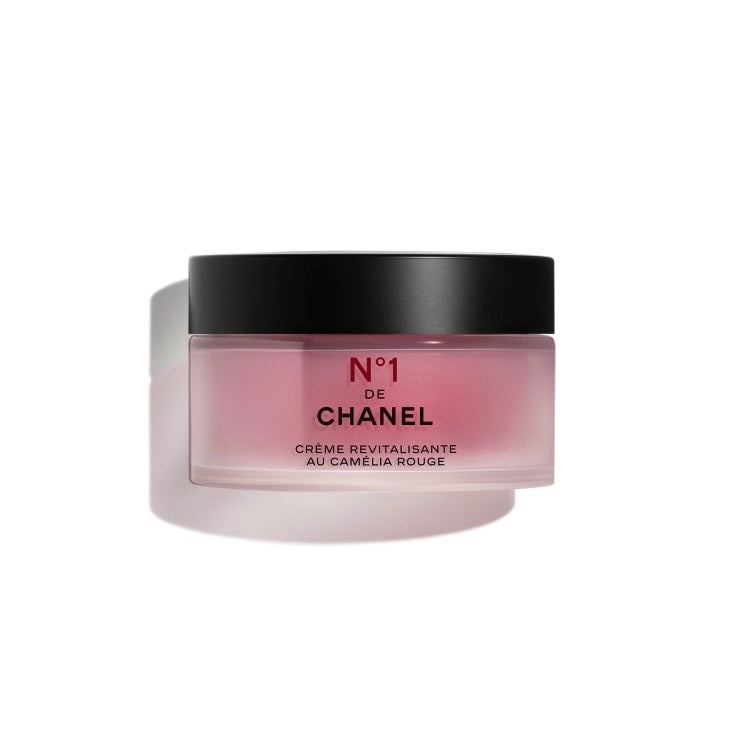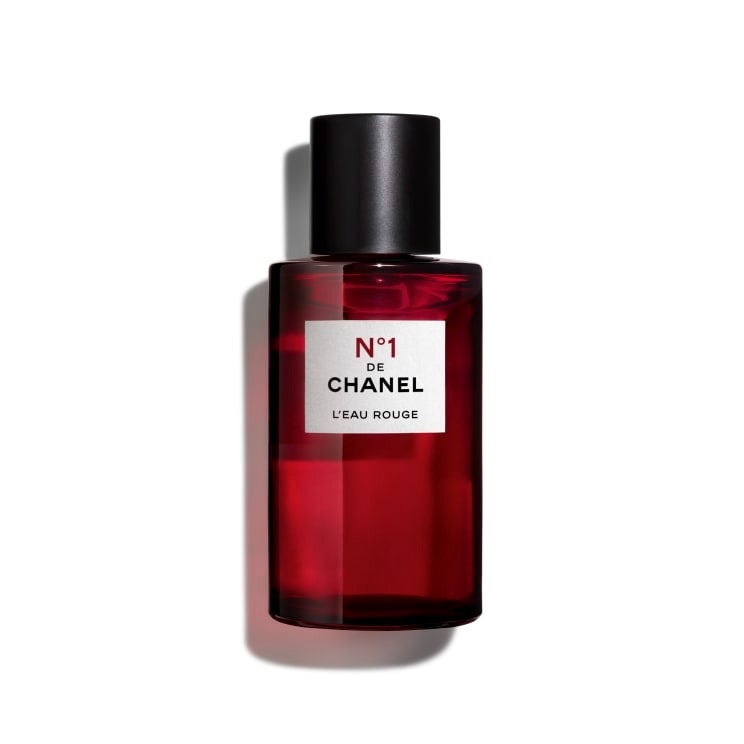Meet No. 1 De Chanel, The Brand’s First Sustainable Beauty Range
Chanel has entered the sustainable beauty chat. On Wednesday, the French luxury house launched No. 1 de Chanel, its first foray into the ever-growing (and ever-imperative) eco-conscious skin-care and makeup space. Every detail of the collection was created with respect to the environment: The formulations are made with up to 97% natural ingredients and 80% of the packaging is made with recyclable glass. Beyond just being friendlier for the planet, No. 1 promises anti-aging innovation that delivers healthier, more radiant skin, thanks to a newly-discovered natural extract from 'The Czar' Camellia flower — a sister to the brand's iconic white Camellia — a crimson red variety that boasts powerful skin-nourishing properties. (The seed shells of the flower are actually repurposed into the brand's packaging.)
AdvertisementADVERTISEMENT
But is it possible for a century-old brand to successfully pivot its way into literal greener pastures while maintaining its elevated and luxurious je nais quoi? Admittedly, I was skeptical. I've found that some brands who have attempted to "go green" often leave me disappointed with their less-than-impressive formulations and packaging that feels like it could be found on the shelves of a toy store. So last November, I hopped on a plane to Paris (with Chanel) to find out.
"At Chanel, there is no compromise when we speak about formula," a Chanel Beauty expert shares with me at a secret press preview for the launch in Paris. "There is no compromise between efficacy, sensorialité, and tolerance. We always push very far in these three aspects." Chanel's legacy commitments made it particularly challenging for the scientists to figure out how to embark on this new "circular" journey into sustainability. While they have always prided themselves on using Camellia in their skin-care products (you can find the white flower's hydrating benefits in the Hydra range), Chanel's Director of Innovation and Development for Cosmetic Ingredients, Nicola Fuzzati, wanted to take the mission further with No. 1 de Chanel.
Since 1995, Fuzzati has been studying the Camellia and its properties, enamored with the flower. "This flower blooms during the winter and can resist tough conditions — it can resist being frozen," he shares. Which led him, and other scientists at the Chanel laboratories, to embark on a quest to find other skin-care benefits from different varieties of Camellia. Five years ago, Fuzzati and his team discovered the aforementioned Czar (the red camellia) and developed an extract that could more efficiently prevent cellular aging, also known as senescence. Sandra Forestier, Head of the Chanel Biology and Clinical Research Department, explains that as we age, we develop more senescent cells (in other words, dormant skin cells), which are only exacerbated by environmental stressors, like pollution or poor sleeping habits. This results in, yes, you guessed it — dullness, dryness, fine lines, and wrinkles.
AdvertisementADVERTISEMENT
"The most efficient Camellia extracts from Nicolas' lab were the red Camellia extracts, which proved to extend the vitality of the skin by 67%," she tells me. Because of the red camellia's impressive properties, the team focused on infusing its extract (as well as Camellia oil and water), across the range's nine product offerings: face cream, eye cream, serum, serum-in-mist, fragrance mist, tinted lip and cheek balm, foundation, lotion, and powder-to-foam cleanser. According to the brand, after one month of use, users in a clinical trial shared that they found that their skin appeared "younger, smoother, more radiant, and revitalised."
Once they figured out how to make a more natural formula that delivered results, the next difficult task was the look and feel of the product and its packaging. You do not need to own Chanel to know that using anything with the double-C label, from a purse to a nail polish, is an experience. Unboxing even the most delicate, tiny cotton pads feels like an event. So how could they use prestige materials that were sustainable while also keeping material-use to a minimum? Scientists at Chanel went back to number one (wink, wink) to see what they could do.
"The idea for No. 1 was to use new kind of materials for the packaging," a Chanel Beauty expert tells me. "The best example is the cream. Inside the lid, there are Camellia shells. When Nicolas extracted the Camellia oil, he had to press the seeds. Before, they would dispose of the shells, but he asked himself, 'How can we use this circular approach?' He worked with a partner to create this lid by mixing the Camellia seed with wood shavings."
AdvertisementADVERTISEMENT
The other products in the range have bio-based materials. "Most of the packaging is made with glass because it’s easily recyclable," Chanel's beauty expert continues. "We used organic ink on the packaging. This is the first time that we have a refillable cream at Chanel. We removed cellophane, leaflets, and instead, include a QR code — this is a big achievement for us in terms of packaging. The expectations were grand, the challenge was difficult, but we succeeded and for us, it's a big step."
A big step, indeed. I've been using two of No. 1 de Chanel's products for the last month and a half — the serum and the cream — and as skeptical as I was, the products have not only given my skin the vitalité the Chanel scientists speak so fondly of, but have also made me more hopeful for the future of sustainable beauty. (It is possible to make a gorgeous, efficacious, and sustainable skin-care product!)
While the brand and its fellow designer houses —and the fashion and beauty industries in general — have a long way to go in lessening their carbon footprint (perhaps by rethinking those advent calendars for starters), it is brands like Chanel who can lead the charge and make sustainability not just en vogue, but commonplace.
Refinery29's selection is purely editorial and independently chosen – we only feature items we love! As part of our business model we do work with affiliates; if you directly purchase something from a link on this article, we may earn a small amount of commission. Transparency is important to us at Refinery29, if you have any questions please reach out to us.
AdvertisementADVERTISEMENT













